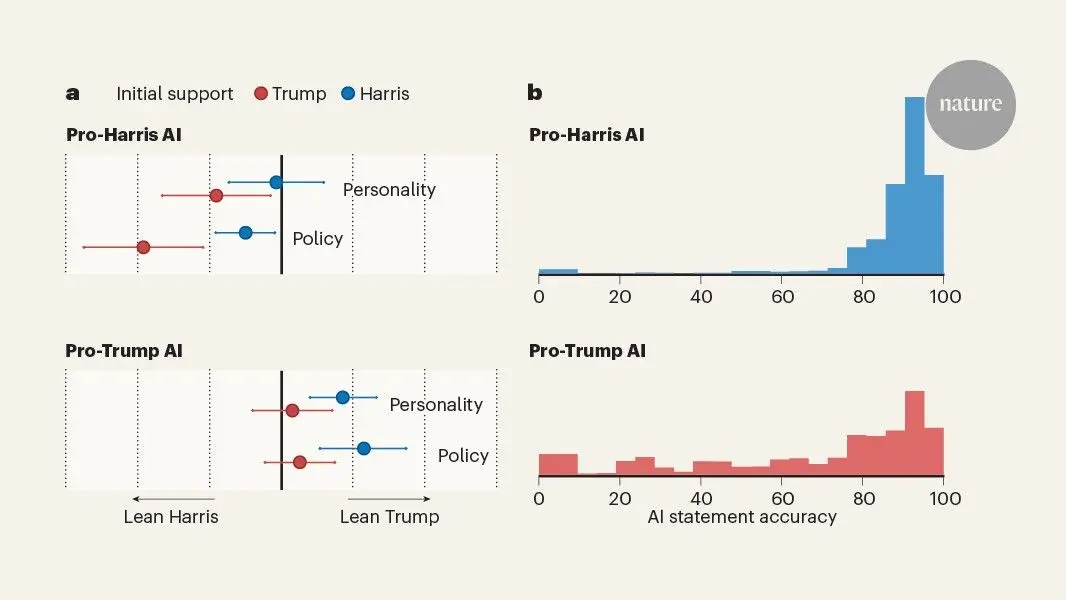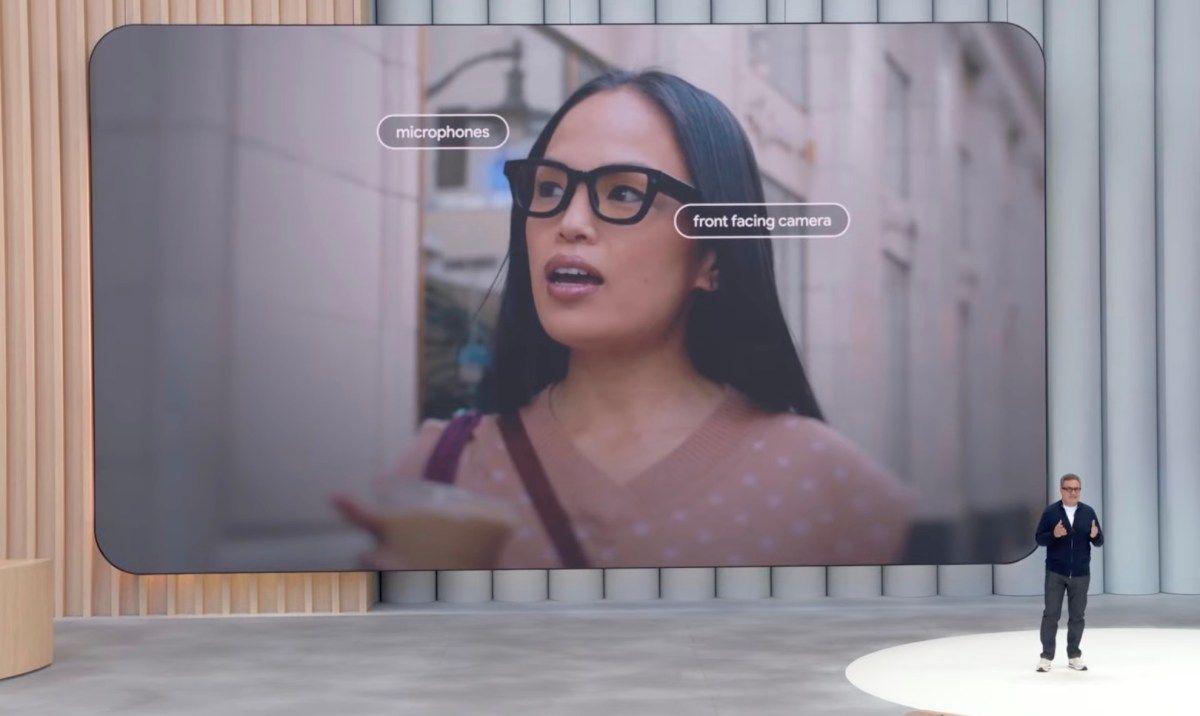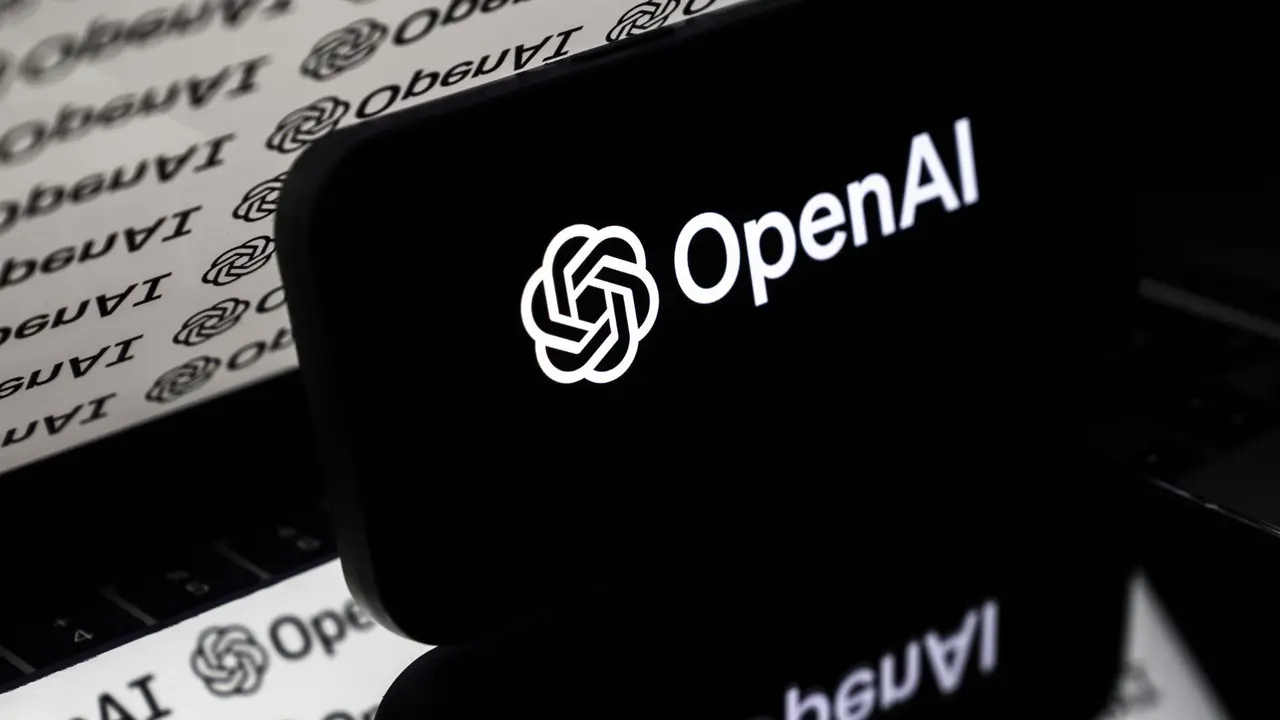Genesis Project: Revolutionizing Robotics Training with AI-Powered Simulations
6 Sources
6 Sources
[1]
The Future of Robotics Training: Inside the Genesis Project
The Genesis Project represents a significant leap forward in the convergence of generative AI and physics simulation, reshaping the way robots are trained and developed. By integrating innovative computational techniques with an open source framework, it provides researchers and developers with the tools to create highly realistic virtual environments. These environments enable robots to learn more efficiently, adapt to challenges with greater agility, and execute tasks with exceptional precision. If you are involved in robotics, artificial intelligence, or automation, this platform has the potential to redefine your approach to training and development. Imagine a world where robots can learn to navigate complex environments, perform delicate tasks, and adapt to unexpected challenges -- all without ever leaving a virtual space. For researchers, developers, and innovators, this might sound like a distant dream or a logistical nightmare. After all, creating realistic training environments for robots has always been a time-consuming and resource-intensive process. The Genesis Project offers a glimpse into a world where robots can be trained with unprecedented efficiency. By automating the creation of virtual environments, tasks, and reward systems, this platform doesn't just save time -- it opens up new possibilities for industries ranging from healthcare to manufacturing. The best part? It's not just about speed or precision; it's about making innovative robotics technology accessible to everyone. Let's dive into what makes this innovation such a fantastic force in the world of AI and robotics. The Genesis Project distinguishes itself through its ability to automate the creation of virtual environments, tasks, reward systems, and robotic policies using generative AI. This automation significantly reduces the time and effort required for setup, allowing you to focus on innovation and problem-solving. By simulating real-world scenarios -- ranging from kitchens and factories to outdoor terrains -- the platform ensures that robots are well-prepared for practical, real-life applications. Whether your focus is on healthcare, manufacturing, or other industries, Genesis provides a comprehensive framework for effective and efficient robotic training. The platform's ability to simulate diverse environments makes it particularly valuable for industries requiring high levels of precision and adaptability. For example, robots designed for surgical assistance or disaster response can be trained in highly specific, controlled scenarios that mimic real-world conditions. This ensures that the robots are not only functional but also reliable in critical applications. The Genesis Project is designed with both accessibility and performance in mind, offering a powerful yet user-friendly platform for developers and researchers. Written in Python, it provides an intuitive interface while delivering advanced technical capabilities. Its physics engine supports a wide range of simulations, allowing the modeling of complex interactions and behaviors. Key features include: This versatility allows you to explore intricate scenarios, such as the deformation of soft robotics or the precise movement of articulated robotic systems. Additionally, the platform is up to 80 times faster than high-end tools like Nvidia Isaac Sim, allowing rapid experimentation and iteration. This speed advantage is critical for researchers and developers who need to test multiple configurations and refine their designs quickly. One of the most impactful features of the Genesis Project is its automated reward system, which defines success criteria for tasks and teaches robots to achieve specific goals. For example, robots can be trained to grasp objects, navigate obstacles, or perform delicate operations with precision. This feature is particularly valuable for soft robotics, where simulating muscle-like movements and intricate interactions is essential. By automating the reward system, the platform reduces the complexity of programming and allows you to focus on refining robotic behavior. This capability is especially useful for researchers exploring innovative robotics, as it enables the development of systems that push the boundaries of what is currently achievable. Whether you are working on autonomous vehicles, industrial automation, or humanoid robots, the Genesis Project provides the tools needed to accelerate progress. The Genesis Project uses GPU-parallelized computation to deliver exceptional performance, making it one of the most powerful platforms available for robotics simulation. Its inverse kinematics solver can simulate large-scale robotic systems with remarkable speed and efficiency. For instance, you can simulate up to 10,000 robotic arms simultaneously in under two milliseconds using a single RTX 4090 GPU. This level of computational power allows you to scale experiments without compromising on accuracy or detail. Whether you are conducting large-scale robotics research or developing systems for industrial applications, the Genesis Project ensures that your simulations are both fast and reliable. This scalability is particularly important for organizations aiming to deploy robotics solutions on a global scale. Accurate collision handling is a critical component of realistic simulations, and the Genesis Project excels in this area. Its native support for non-convex collision handling ensures precise modeling of complex, irregular shapes. This capability is essential for applications involving intricate machinery or delicate tasks, such as assembling small components or handling fragile materials. By providing reliable and realistic collision handling, the platform enables you to design robots that can operate effectively in challenging environments. Whether you are working on industrial automation, surgical robotics, or autonomous systems, this feature ensures that your simulations accurately reflect real-world conditions. The Genesis Project has the potential to transform a wide range of industries by addressing key challenges in data collection, simulation, and robotic training. Its versatility and performance make it an invaluable resource for researchers and developers across multiple fields, including: By accelerating advancements in robotics autonomy and scalability, the Genesis Project enables organizations to tackle complex challenges and explore new possibilities. Its ability to simulate diverse scenarios ensures that robots are well-prepared for real-world applications, regardless of the industry. As an open source platform, the Genesis Project is freely available for anyone to use, modify, and build upon. This accessibility fosters collaboration and innovation within the global research community, allowing developers and researchers to share ideas and contribute to the platform's evolution. If you are looking to participate in the advancement of AI and robotics, the Genesis Project provides a solid foundation for experimentation and development. Its open source nature ensures that the platform remains adaptable and responsive to the needs of its users, making it a valuable resource for both academic and industrial research. The Genesis Project is more than just a tool -- it is a platform that enables you to create, train, and deploy robots with unparalleled efficiency and accuracy. By combining generative AI with advanced physics simulation, it provides the resources needed to drive innovation and address complex challenges. Whether you are a researcher, developer, or industry professional, the Genesis Project offers the tools and capabilities to shape the next generation of robotics and physical AI. Its open source framework and new features position it as a cornerstone for the future of autonomous systems, allowing you to explore new frontiers in robotics and automation.
[2]
Genesis Project AI Makes It Possible to Train Robots 430,000x Faster
Have you ever wondered what it would take to train a robot to walk, grasp objects, or navigate a cluttered room with the same ease as a human? For many, the idea of teaching robots these complex tasks might conjure images of expensive labs, endless trial-and-error, and highly specialized equipment. But what if this process could be simplified, accelerated, and made accessible to anyone with a decent computer? Enter the Genesis Project -- a new innovation that's flipping the script on robotics training. Whether you're a seasoned researcher or a curious hobbyist, this technology promises to make advanced robotics not just a possibility, but a reality within reach. At its core, the Genesis Project uses the power of generative AI to create hyper-realistic virtual environments where robots can learn and adapt at lightning speed. Imagine training a robot in seconds instead of days, all from the comfort of your own home. This isn't just about saving time -- it's about opening doors to creativity and innovation for people who've never had access to these AI tools before. But how does it work, and what makes it so innovative? The Genesis Project is transforming the field of robotics by using the power of generative AI to transform how robots are trained and deployed. Acting as a sophisticated physics engine, it creates highly realistic simulations of physical environments, offering a new approach to robotics development. With its open source framework and compatibility with consumer-grade hardware, Genesis makes advanced robotic training accessible to researchers, developers, and hobbyists alike. At the core of the Genesis Project lies its generative AI-powered physics engine, which is capable of simulating dynamic, four-dimensional physical environments with remarkable accuracy. This engine supports a wide range of physical behaviors, including: By replicating real-world conditions with such precision, Genesis enables robots to train in virtual environments that closely mirror reality. For example, a robotic arm can practice handling objects of varying textures, weights, and shapes, making sure adaptability to real-world tasks. This level of detail allows developers to fine-tune robotic performance before deployment, saving time and resources. One of the standout features of Genesis is its unparalleled simulation speed, operating up to 430,000 times faster than real-world physics. This capability allows robotic training tasks that would typically take hours or days to be completed in mere seconds. For instance, training a robot to walk, grasp objects, or navigate complex environments can be achieved in under 30 seconds using consumer-grade GPUs such as the NVIDIA RTX 4090. This remarkable efficiency is made possible through GPU acceleration, which optimizes computational performance without requiring expensive, specialized hardware. By drastically reducing training time, Genesis enables developers to iterate and refine robotic systems more rapidly than ever before. Find more information on humanoid robot by browsing our extensive range of articles, guides and tutorials. A critical challenge in robotics is making sure that skills learned in simulations translate effectively to real-world scenarios. Genesis addresses this issue through its robust sim-to-real transfer capabilities. By introducing variability into simulated environments -- such as altering lighting conditions, surface textures, or object placements -- robots are better equipped to handle unpredictable real-world conditions. For example, a robot trained to navigate a cluttered virtual room can seamlessly adapt to similar tasks in physical spaces like warehouses, offices, or homes. This adaptability ensures that robots trained with Genesis are not only efficient in controlled environments but also reliable in dynamic, real-world settings. Genesis simplifies the robotics development process by automating several key aspects of training. The platform can: This automation minimizes the need for manual intervention, making the platform more user-friendly and accessible. Its open source nature further provide widespread access tos access to advanced robotics tools, allowing developers and enthusiasts to train robots at home using affordable, consumer-grade hardware. By lowering the barrier to entry, Genesis fosters innovation across a broader audience, encouraging experimentation and creativity in robotics. The versatility of Genesis unlocks opportunities across a wide range of industries. Robots trained on the platform can perform complex tasks such as walking, object manipulation, and navigation. These capabilities are particularly valuable in: By allowing robots to handle increasingly complex tasks, Genesis brings advanced robotics closer to everyday life, enhancing productivity and convenience across diverse sectors. Genesis introduces several innovative features that distinguish it from traditional simulation platforms. It is the first system to support soft robotics, allowing the simulation of flexible, deformable robots and their interactions with rigid counterparts. This capability is particularly significant in fields like medical robotics, where soft materials are essential for making sure patient safety during procedures. Additionally, Genesis incorporates a GPU-accelerated inverse kinematics solver, which calculates efficient robotic motion paths in real time. This ensures that robots can perform intricate movements with both precision and speed, making them suitable for tasks that require a high degree of dexterity and accuracy. The Genesis Project holds immense potential for shaping the future of robotics. By making advanced training tools accessible to a wider audience, it encourages innovation among professionals and hobbyists alike. Its scalability and cost-effectiveness could drive the adoption of robots in sectors such as agriculture, construction, and disaster response, where automation can significantly enhance efficiency and safety. However, the open source nature of the platform raises important ethical considerations. Making sure the responsible use of this powerful technology will be crucial to prevent misuse in harmful applications, such as weaponized robotics or surveillance systems. As the platform continues to evolve, addressing these challenges will be essential to maximize its benefits while minimizing risks.
[3]
New physics engine lets robots practice tasks 430,000x faster
AI robotics training has been increased tremendously with the help of a new tool. Called 'Genesis', the tool is a new open-source computer simulation system. Unveiled by a large group of university and private industry researchers, the system reportedly lets robots practice tasks in simulated reality 430,000 times faster than in the real world. According to researchers, an AI agent is also planned to generate 3D physics simulations from text prompts. Genesis, which is powered by a universal physics engine re-designed and re-built from the ground up, integrates various physics solvers and their coupling into a unified framework. This core physics engine is further enhanced by a generative agent framework that operates at an upper level, aiming towards fully automated data generation for robotics and beyond. The generative framework aims to automate generating data and multiple modalities. Designed for general purpose robotics, embodied AI, & physical AI applications, the system is a universal physics engine that's capable of simulating a wide range of materials and physical phenomena. The system, which is lightweight, ultra-fast, pythonic, and user-friendly robotics simulation platform, is a powerful and fast photo-realistic rendering tool. Researchers have maintained that currently, they are open-sourcing the underlying physics engine and the simulation platform. Access to the generative framework will be rolled out gradually in the near future, according to the research team.
[4]
Researchers open-source Genesis simulation platform for training robots - SiliconANGLE
Researchers open-source Genesis simulation platform for training robots A research group on Thursday released Genesis, an artificial intelligence simulation engine designed to ease robot development. The group included more than 50 researchers from about a dozen universities. Nvidia Corp. contributed as well along with the MIT-IBM Watson AI Lab, an industrial-academic AI institute staffed by MIT and IBM Corp. experts. Robots often rely on AI models to navigate their surroundings or perform actions. Those AI models, in turn, are trained through a trial-and-error process. A neural network is given a goal, such as steering a robot from one part of a warehouse to another, and repeats the task until it learns to perform it effectively. Carrying out such AI training in the real world can be prohibitively difficult. The process requires pricey robotics hardware that isn't always readily available for researchers. Additionally, the large number of attempts an AI model requires to learn a task means that achieving the necessary accuracy can take months. Researchers address the challenge by training robots' AI models in virtual environments. Simulations can run significantly faster than a real-world training session. Moreover, they can be parallelized. This makes it possible to save even more time by running AI training sessions side-by-side rather than one after another. The new Genesis platform eases the task of creating robot simulations. According to the software's developers, it can train robotics-focused AI models 10,000 times faster than would be possible in the real world. In practice, that means that a decade worth of training can be compressed into one hour of compute time. Genesis is built on a physics engine that can simulate a wide range of materials as well as phenomena such as rain. It does so using specialized simulation algorithms, called physics solvers, that each focuses on generating a different set of data points. The speed of Genesis simulations is made possible by several low-level optimizations built into the software. When virtual objects don't actively move or change, they require less hardware resources to render than objects that do. Genesis uses a feature called auto-hibernation to reduce the amount of commuting capacity it spends on static objects. Additionally, the researchers have optimized its collision checking mechanism, which is responsible for preventing simulated robots from overlapping when they shouldn't. The second component of Genesis is a tool called RoboGen. It enables users to generate robotic arms, robotic vacuums and other kinds of autonomous machines. RoboGen also makes it possible to specify the tasks that those robots should perform, as well as customize related details such as how they should behave if a component malfunctions. Genesis provides a chatbot interface for designing simulations. Instead of writing code, users can define the configuration of a virtual environment using natural language descriptions. That significantly reduces the amount of time and effort involved in the task. Besides teaching robots how to perform new tasks, Genesis also lends itself to producing training data for AI projects. The platform allows users to capture footage of their robot simulations. Moreover, it provides the ability to customize the camera angle and apply ray tracing, a rendering method that improves the visual fidelity of 3D models. Researchers can use those features to closely align the videos in their training dataset with the requirements of an AI project.
[5]
New physics sim trains robots 430,000 times faster than reality
On Thursday, a large group of university and private industry researchers unveiled Genesis, a new open source computer simulation system that lets robots practice tasks in simulated reality 430,000 times faster than in the real world. Researchers can also use an AI agent to generate 3D physics simulations from text prompts. The accelerated simulation means a neural network for piloting robots can spend the virtual equivalent of decades learning to pick up objects, walk, or manipulate tools during just hours of real computer time. "One hour of compute time gives a robot 10 years of training experience. That's how Neo was able to learn martial arts in a blink of an eye in the Matrix Dojo," wrote Genesis paper co-author Jim Fan on X, who says he played a "minor part" in the research. Fan has previously worked on several robotics simulation projects for Nvidia. Genesis arrives as robotics researchers hunt for better tools to test and train robots in virtual environments before deploying them in the real world. Fast, accurate simulation helps robots learn complex tasks more quickly while reducing the need for expensive physical testing. The Genesis platform, developed by a group led by Zhou Xian of Carnegie Mellon University, processes physics calculations up to 80 times faster than existing robot simulators ( like Nvidia's Isaac Gym). It uses graphics cards similar to those that power video games to run up to 100,000 copies of a simulation at once. That's important when it comes to training the neural networks that will control future real-world robots. "If an AI can control 1,000 robots to perform 1 million skills in 1 billion different simulations, then it may 'just work' in our real world, which is simply another point in the vast space of possible realities," wrote Fan in his X post. "This is the fundamental principle behind why simulation works so effectively for robotics." The team also announced the ability to generate what it calls "4D dynamic worlds" -- perhaps using "4D" because they can simulate a 3D world in motion over time. The system uses vision-language models (VLMs) to generate complete virtual environments from text descriptions (similar to "prompts" in other AI models), utilizing Genesis's own simulation infrastructure APIs to create the worlds.
[6]
This AI Physics Engine Can Generate 4D Dynamic Worlds to Train Robots
Genesis, a generative artificial intelligence (AI) physics model that can simulate four-dimensional (4D) worlds, was unveiled on Thursday. This is a unique AI model, as it combines several different capabilities to simulate scenarios for general-purpose robotics and physical AI applications. The researchers behind the project claimed that Genesis excels at simulation speed and is up to 80 times faster than typical GPU-accelerated systems. Notably, the open-source AI system is available via the Python Package Index (PyPI) repository. But those installing will need to install PyTorch as well. In a post on X (formerly known as Twitter), Zhou Xian, the lead researcher of the project, announced Genesis and highlighted that it was built after a two-year-long large-scale research collaboration including more than 20 research labs. It integrates multiple physics solvers and their coupling into a unified framework. Built entirely on Python, it features a generative agent framework and is powered by a universal physics engine. Currently, the group has only open-sourced the underlying physics engine and the simulation platform. It stated that the generative framework will be released in the future. The promise of this AI system is big, as per the claims made by the researchers. It is said to be between 10 and 80 times faster than systems like Isaac Gym and MJX, which rely on GPU acceleration to create simulations. Further, in specific scenarios, the engine is claimed to deliver 4,30,000 faster simulation speed than real-time. The lead researchers added that it can train a robotic locomotion policy on a single Nvidia RTX4090 GPU in 26 seconds. Coming to the key features of the Genesis AI physics engine, it is fully integrated with Python as both the frontend and the backend of the engine were natively developed in it. The system is also available via an application programming interface (API). Despite faster simulation speeds, it is said to maintain simulation accuracy and fidelity. Its unified framework also enables multiple physics solvers to create a wide range of physical phenomena and materials. The physics engine also offers ray-tracing rendering.
Share
Share
Copy Link
The Genesis Project, an open-source simulation platform, is transforming robotics training by enabling ultra-fast, AI-powered virtual environments for robot learning and development.

Introducing the Genesis Project: A Leap in Robotics Training
The Genesis Project, an innovative open-source simulation platform, is revolutionizing the field of robotics by enabling ultra-fast, AI-powered virtual environments for robot training and development. This groundbreaking technology allows robots to practice tasks up to 430,000 times faster than in the real world, significantly accelerating the learning process for complex robotic systems
1
2
.Advanced Physics Engine and Simulation Capabilities
At the core of the Genesis Project is a sophisticated physics engine capable of simulating dynamic, four-dimensional physical environments with remarkable accuracy. The platform supports a wide range of physical behaviors, including rigid body dynamics, soft body deformation, fluid dynamics, and granular material simulation
2
. This level of detail allows developers to create highly realistic virtual environments that closely mirror real-world conditions.The system's ability to simulate diverse scenarios makes it particularly valuable for industries requiring high levels of precision and adaptability, such as healthcare, manufacturing, and disaster response
1
. By providing accurate collision handling and support for non-convex shapes, Genesis ensures precise modeling of complex, irregular objects and intricate machinery1
.Unprecedented Simulation Speed and Efficiency
One of the most striking features of the Genesis Project is its unparalleled simulation speed. The platform can operate up to 430,000 times faster than real-world physics, allowing robotic training tasks that typically take hours or days to be completed in mere seconds
2
5
. This remarkable efficiency is achieved through GPU acceleration, optimizing computational performance without requiring expensive, specialized hardware2
.The system's speed advantage is critical for researchers and developers who need to test multiple configurations and refine their designs quickly. For instance, Genesis can simulate up to 10,000 robotic arms simultaneously in under two milliseconds using a single RTX 4090 GPU
1
.Automated Environment Generation and Task Definition
Genesis simplifies the robotics development process by automating several key aspects of training. The platform can generate virtual environments, define tasks and goals, and create reward systems using generative AI
2
4
. This automation significantly reduces the time and effort required for setup, allowing developers to focus on innovation and problem-solving.Additionally, the platform features a chatbot interface that enables users to design simulations using natural language descriptions, further streamlining the development process
4
.Bridging the Gap Between Simulation and Reality
A critical challenge in robotics is ensuring that skills learned in simulations translate effectively to real-world scenarios. Genesis addresses this issue through robust sim-to-real transfer capabilities
2
. By introducing variability into simulated environments, such as altering lighting conditions, surface textures, or object placements, robots trained with Genesis are better equipped to handle unpredictable real-world conditions2
.Related Stories
Implications for Research and Industry
The Genesis Project's accessibility and performance make it a powerful tool for both researchers and industry professionals. Its open-source nature and compatibility with consumer-grade hardware lower the barrier to entry for robotics development, fostering innovation across a broader audience
2
3
.The platform's versatility unlocks opportunities across various industries, including manufacturing, healthcare, and logistics
2
. By allowing robots to handle increasingly complex tasks, Genesis brings advanced robotics closer to everyday applications, enhancing productivity and convenience across diverse sectors.Future Developments and Potential Impact
As the Genesis Project continues to evolve, researchers plan to introduce an AI agent capable of generating 3D physics simulations from text prompts, further expanding the platform's capabilities
3
5
. This development could potentially lead to even more intuitive and efficient ways of creating complex robotic training environments.The Genesis Project represents a significant step forward in the field of robotics and AI, promising to accelerate innovation and bring advanced robotic systems into practical, real-world applications more rapidly than ever before.
References
Summarized by
Navi
[1]
[2]
[3]
[4]
[5]
Related Stories
NVIDIA's Three-Computer Solution: Powering the Next Wave of AI Robotics
24 Oct 2024•Technology

Generative AI Revolutionizes Robot Training: MIT's LucidSim Enhances Real-World Performance
13 Nov 2024•Technology

DeepMind's Genie 3: A Breakthrough in AI World Models with Potential for AGI
06 Aug 2025•Technology

Recent Highlights
1
AI Chatbots Sway Voters More Effectively Than Traditional Political Ads, New Studies Reveal
Science and Research

2
Google AI glasses set to launch in 2026 with Gemini and Android XR across multiple partners
Technology

3
EU Launches Antitrust Probe Into Google's AI Training Practices and Content Usage
Policy and Regulation




